Verdolagas, also known as purslane, pirpirim, and it's Latin name Portulaca oleracea is one of my favorite edible weeds to forage in the summer. To me it's the poster child for perennial, edible garden weeds. In this post I'll cover what you need to know about this delicious plant: where it grows, how to identify it, and most importantly, how to cook it.
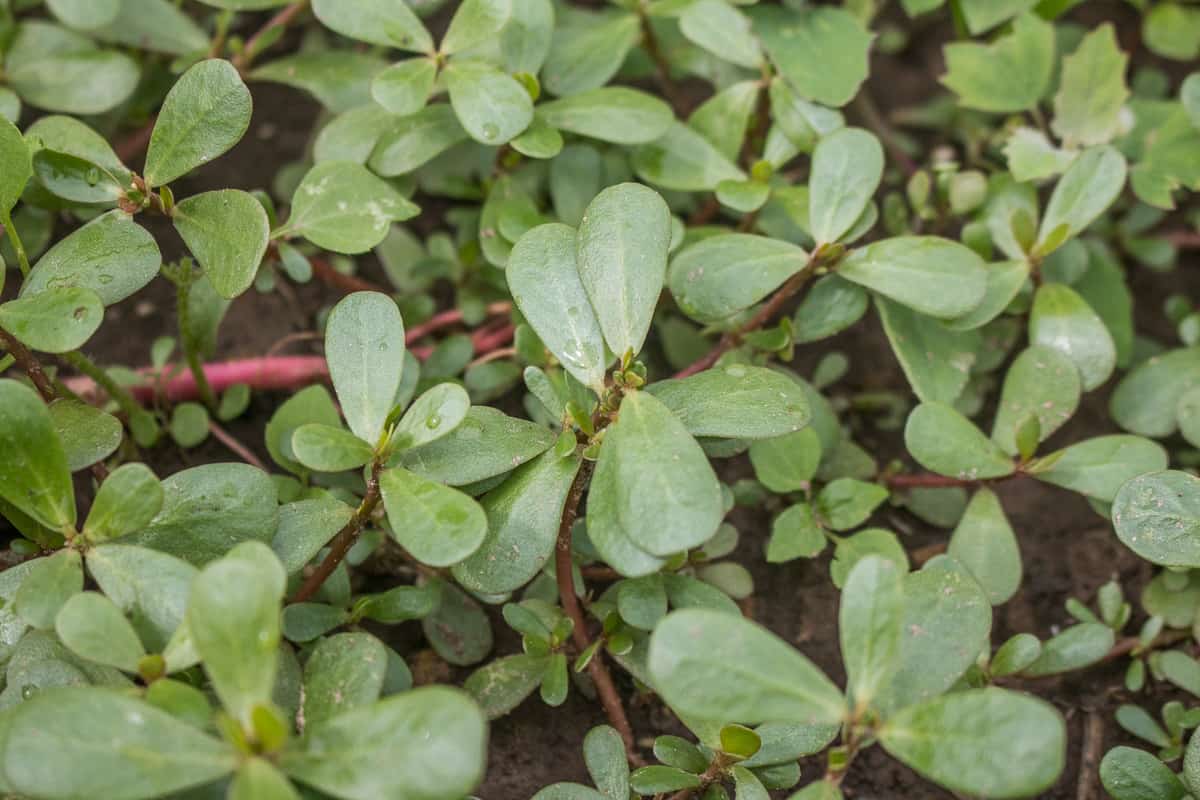
The plant has a long tradition of being used as a food, especially in Mexico and South America, where it's one of a number of edible wild greens known as quelites.
Habitat
Unlike some of the wild plants I harvest, grabbing a basket of these doesn't mean going to the woods. The plant is a common garden weed, and most of the time I harvest it I'm going to a friends garden with a basket to help them remove the weeds during the growing season.
Typically I start to see purslane in June here in the Midwest, and I'll continue harvesting it throughout the year until the plants make flowers and start to get tough.
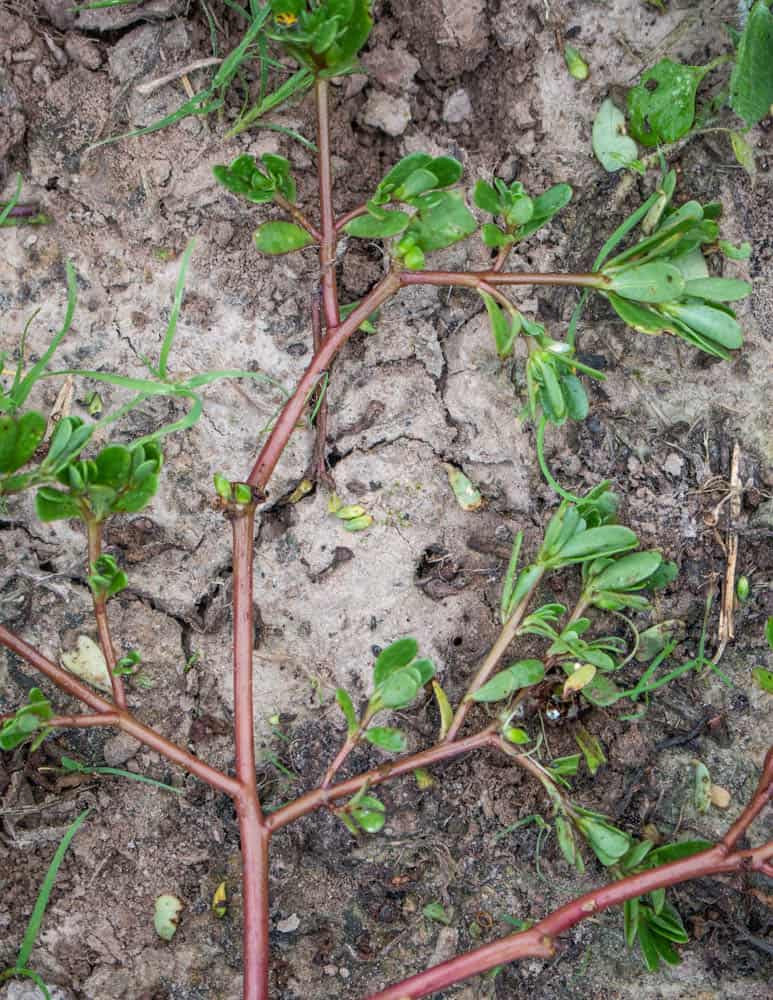
Purslane Identification
Purslane is a perennial succulent that grows prostrate (close to the ground). The stems can be green or red. It's a very common edible weed in gardens and sidewalks.
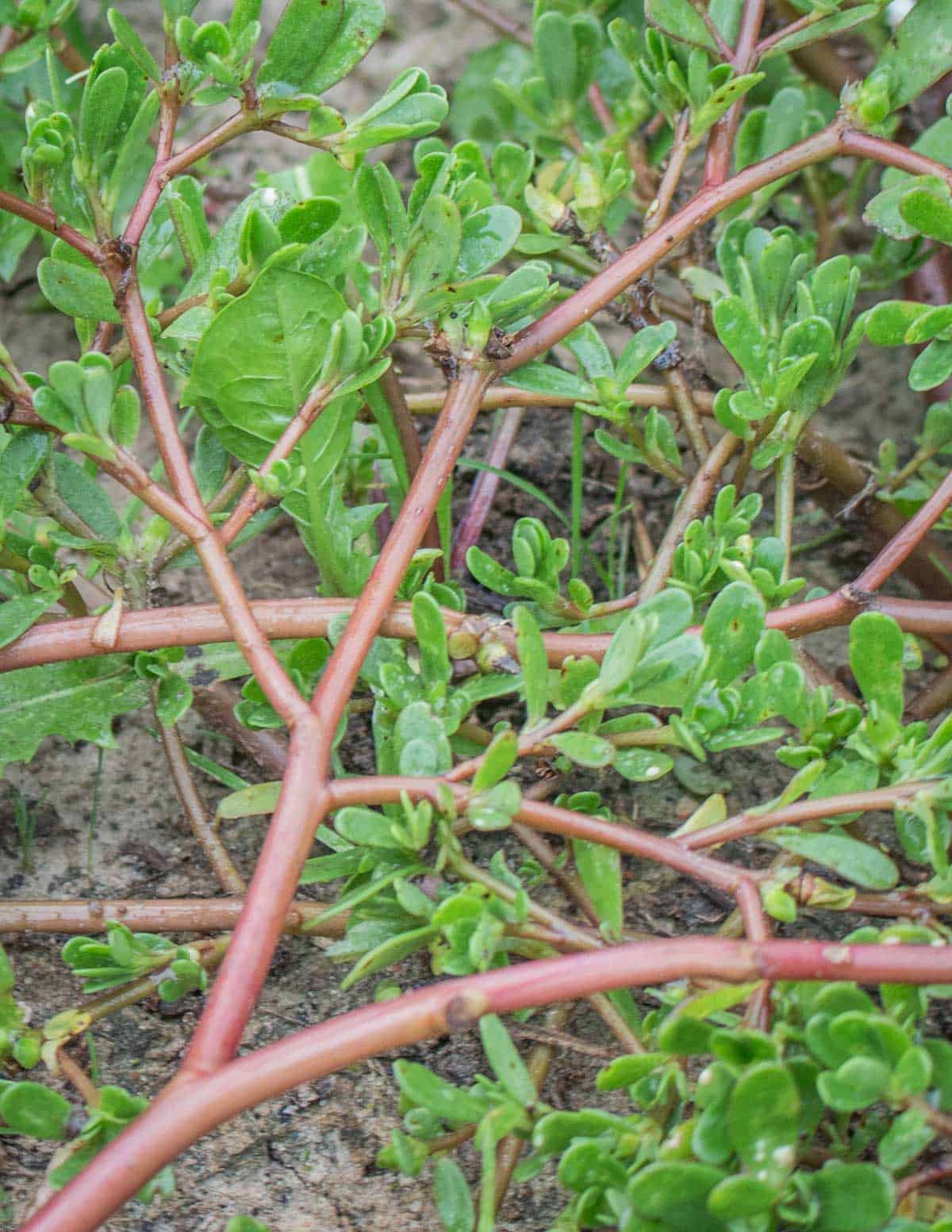
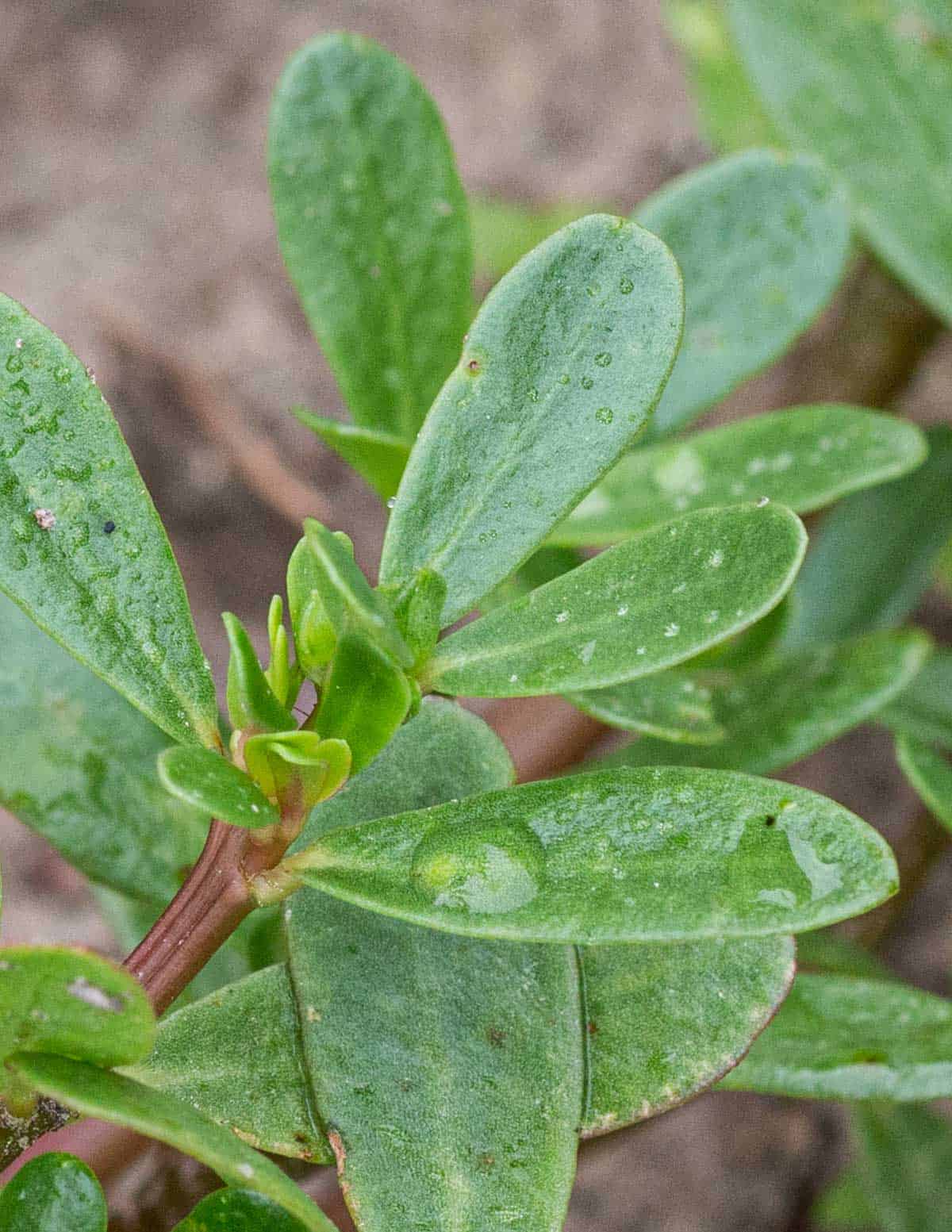
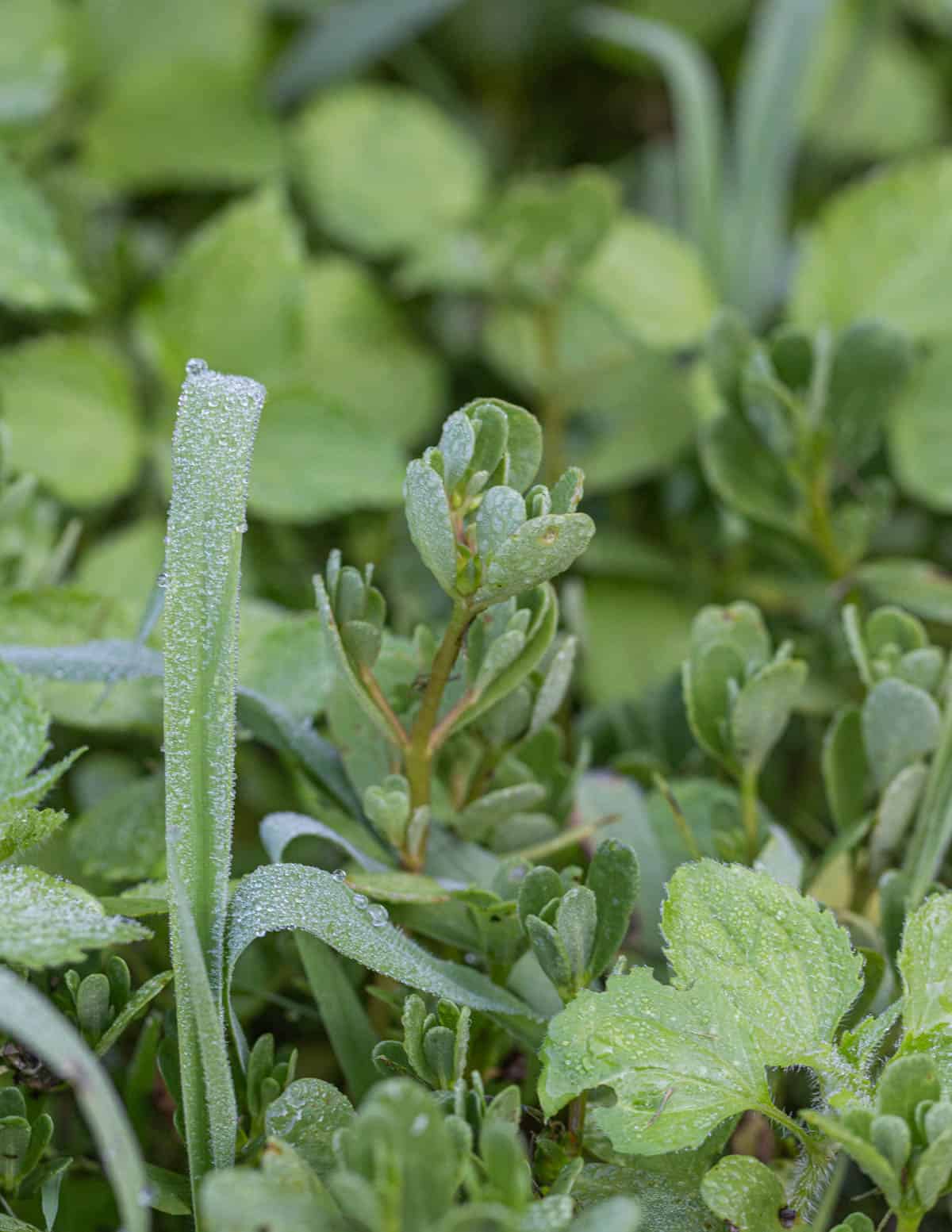
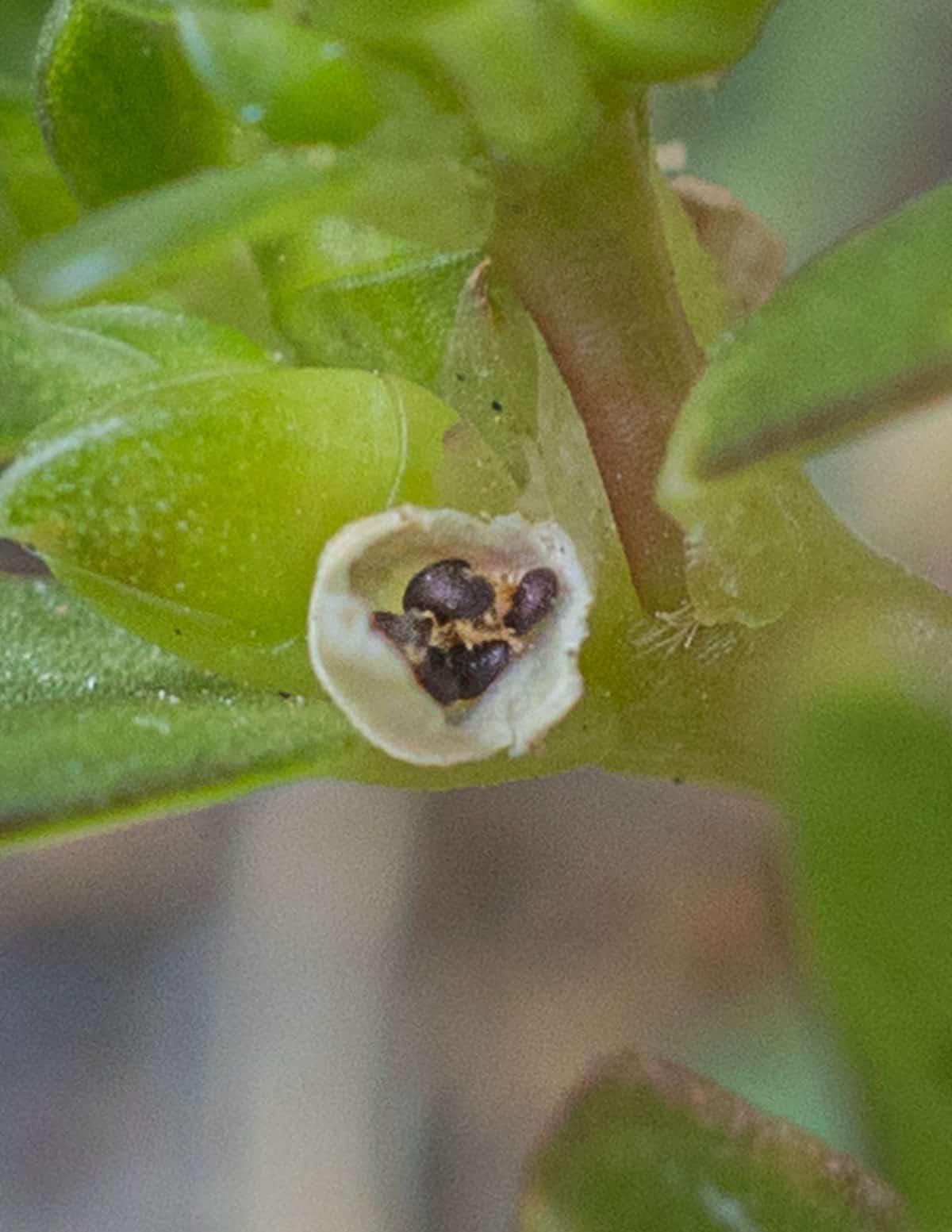
While the plant is non-native and mildly invasive, it's easy to control by removing whole plants with their roots.
Look a likes (Purslane vs Spurge)
Spurge is a look a like that you don't want to eat that grows in the same places as purslane. The most common one I see should be spotted spurge (Euphorbia maculata). Although the plants may grow together, it's easy to tell them apart compared side by side.
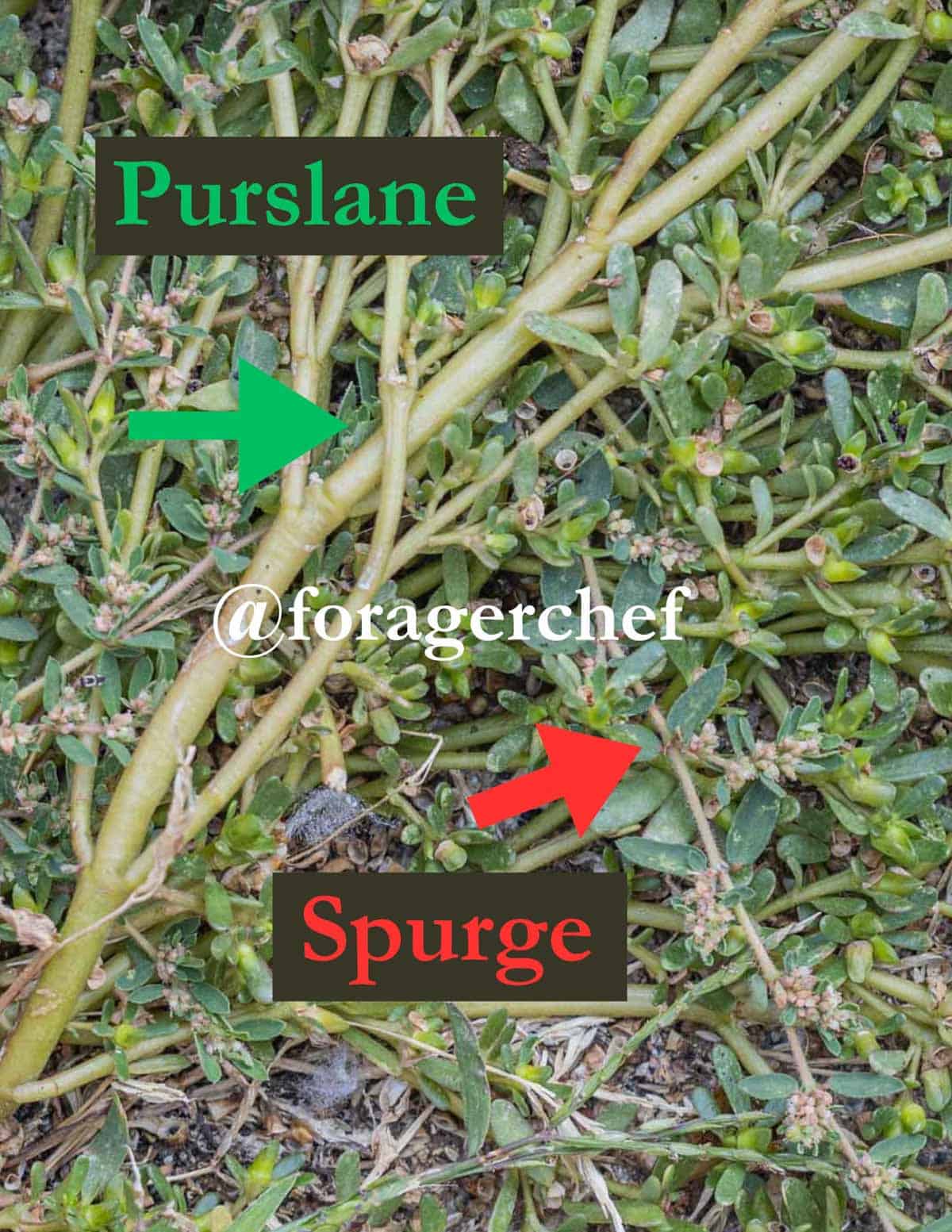
Key ID Differences
- Verdolagas have much thicker, succulent stems. Spurge does not.
- Spurge is flimsy and not very attractive, the stems may also be hairy.
- Prostrate spurges may have a red coloring or spotting on the leaves.
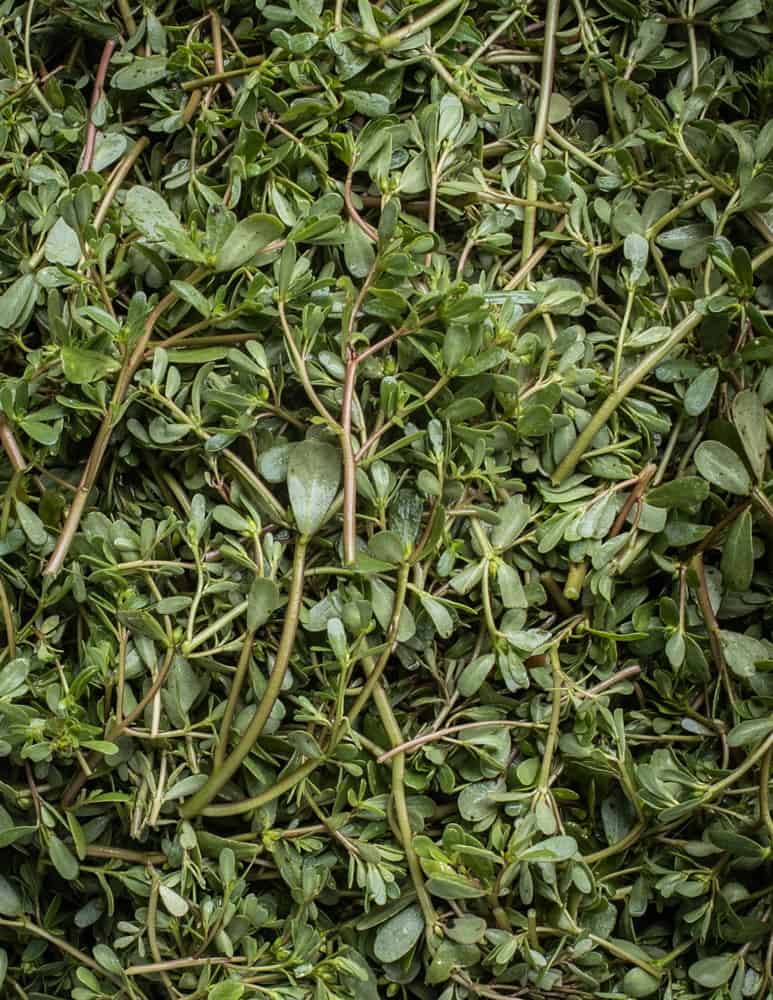
How to Harvest Purslane
The plant can be harvested in large quantities during the summer, for free, making it one of the most common summer greens I harvest. Simply clip the greens with a scissors, leaving the root in the ground.
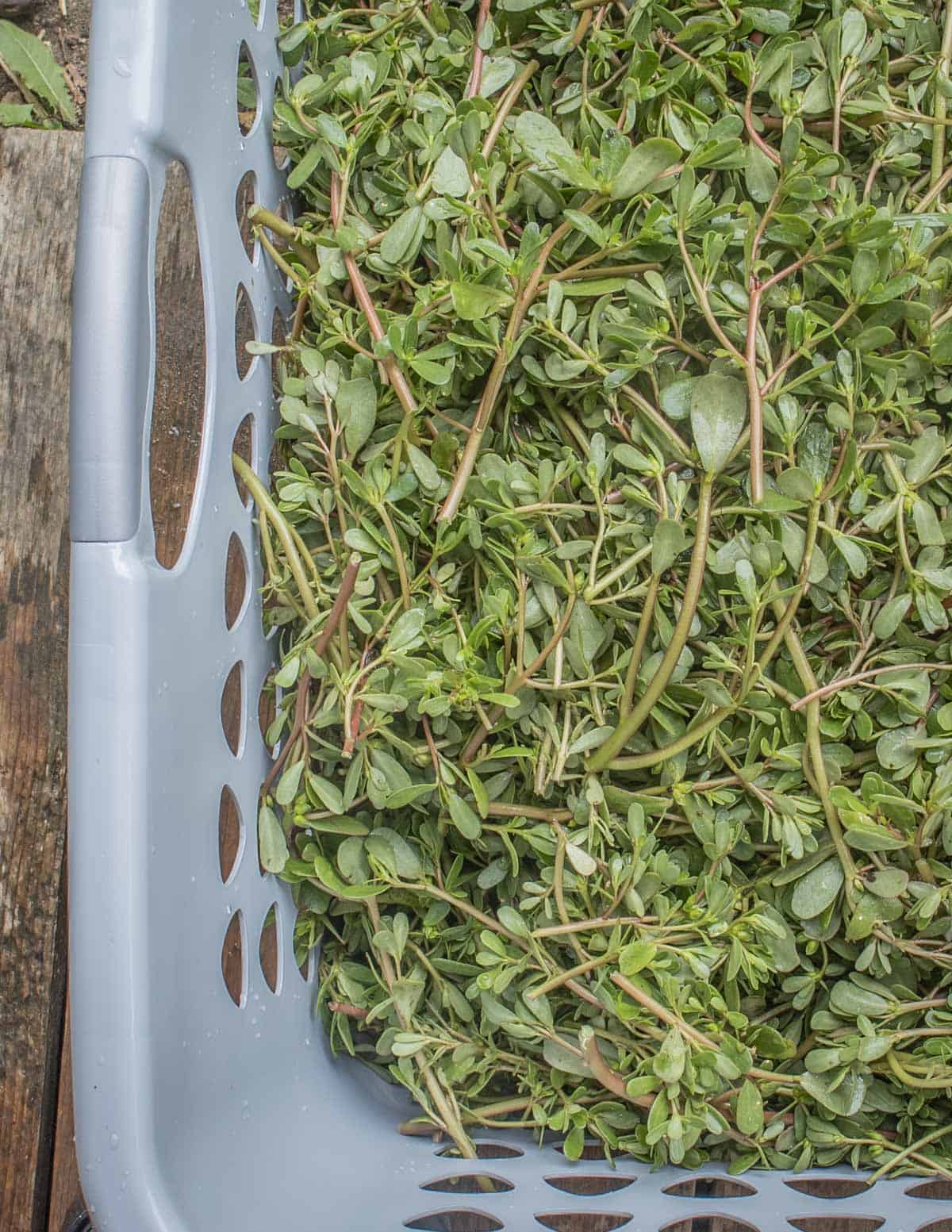
If you're weeding your garden, you can pull up the whole plant, but it will be dirtier and need more cleaning.
Here's some tips on harvesting:
- The most tender plants will be young, harvested before they produce flowers.
- I prefer perfect greens but it's common to see blemishes on the leaves. If you plan on cooking it, a blemish here and there isn't a problem.
- The whole plant is edible, but some parts will be more tender than others. I may use only the young growing tips if I'm serving it raw.
- If you continually remove or cut the plants back they'll continue to produce fresh tender stems and leaves throughout the growing season.
- Offering to help someone weed their garden is a great way to get your hands on the fresh greens.
- You can often buy purslane at Asian, Latin, and Middle Eastern Grocers.
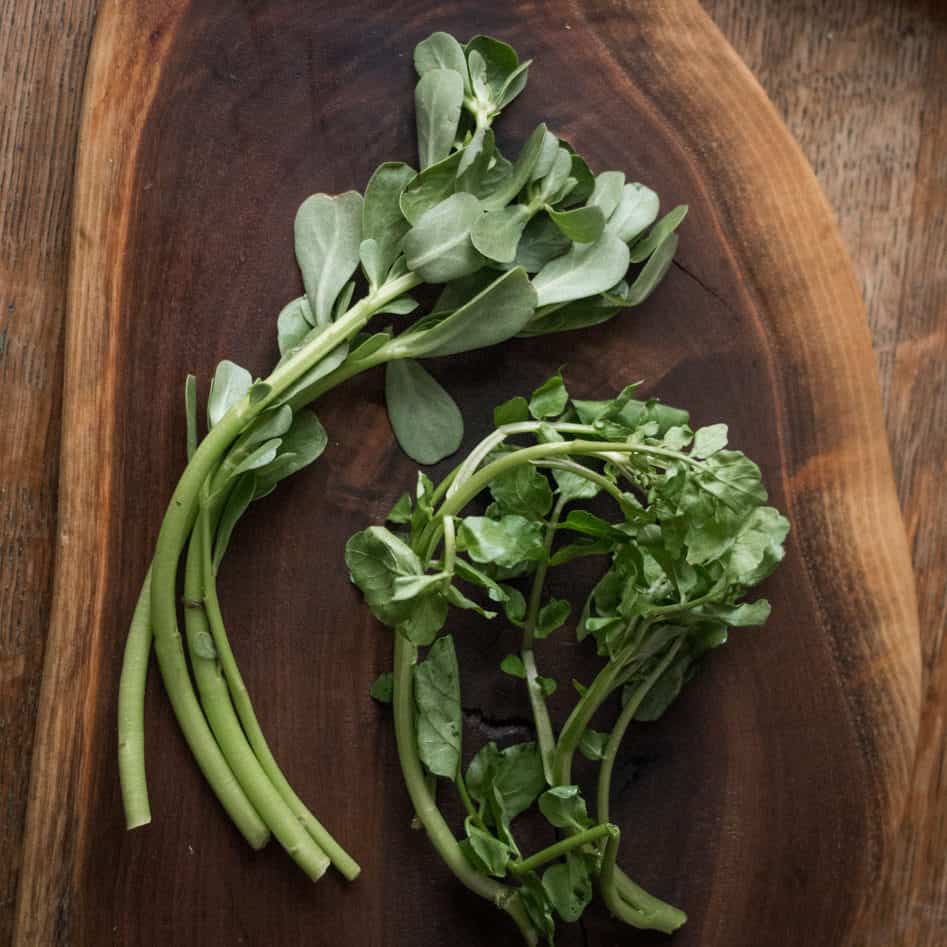
How to Prepare and Clean Purslane
Since they grow prostrate, or directly on the ground the plants are often very dirty, thankfully they're easy to clean. To clean the plants for cooking and eating, fill a large sink or tub full of cold water and put the plants in it, agitating and swishing them around with your hand.
Leave the plants in the water for 20 minutes to refresh them, then remove, dry, and refrigerate in a zip-top bag. Stored in the fridge, fresh greens will last about a week.
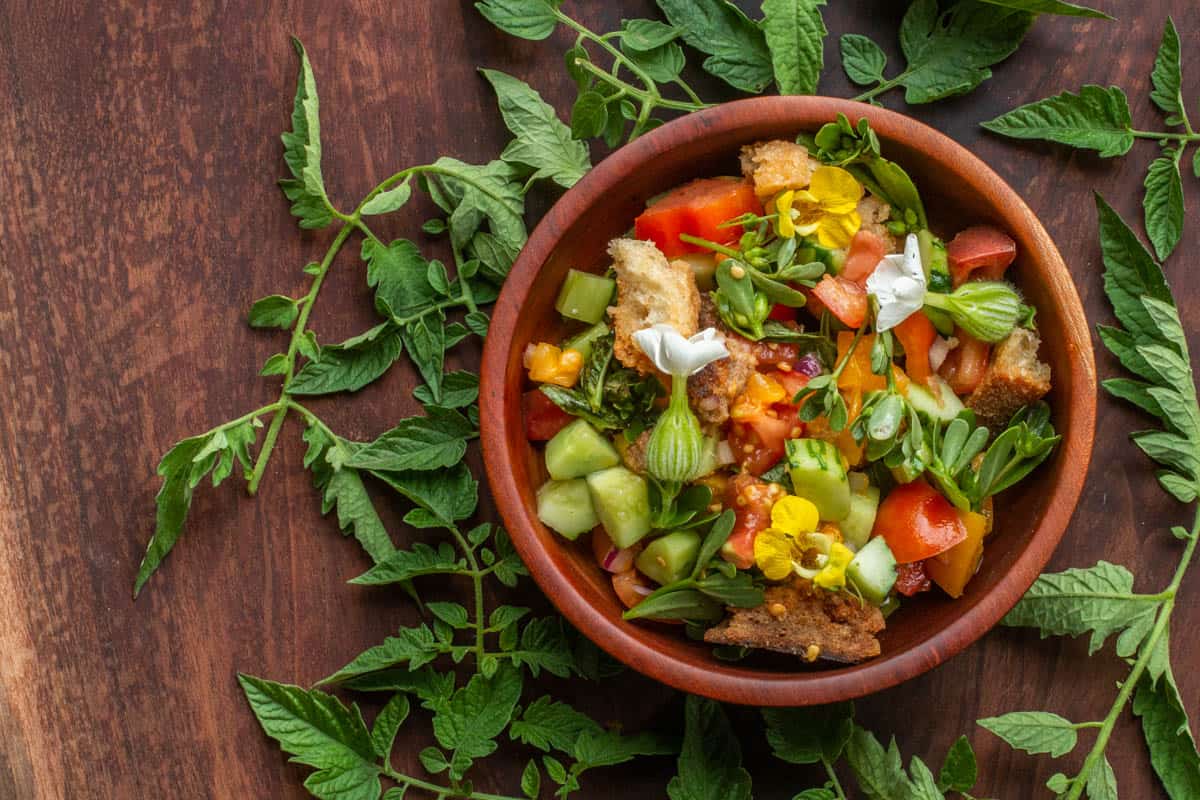
How to Cook Purslane
Purslane is a very versatile plant, and can be cooked or served raw. Exactly which parts you eat and how much of them can depend on the age of the plants and how you plan to prepare them. Mostly I blanch and cook them. Here's a few tips.
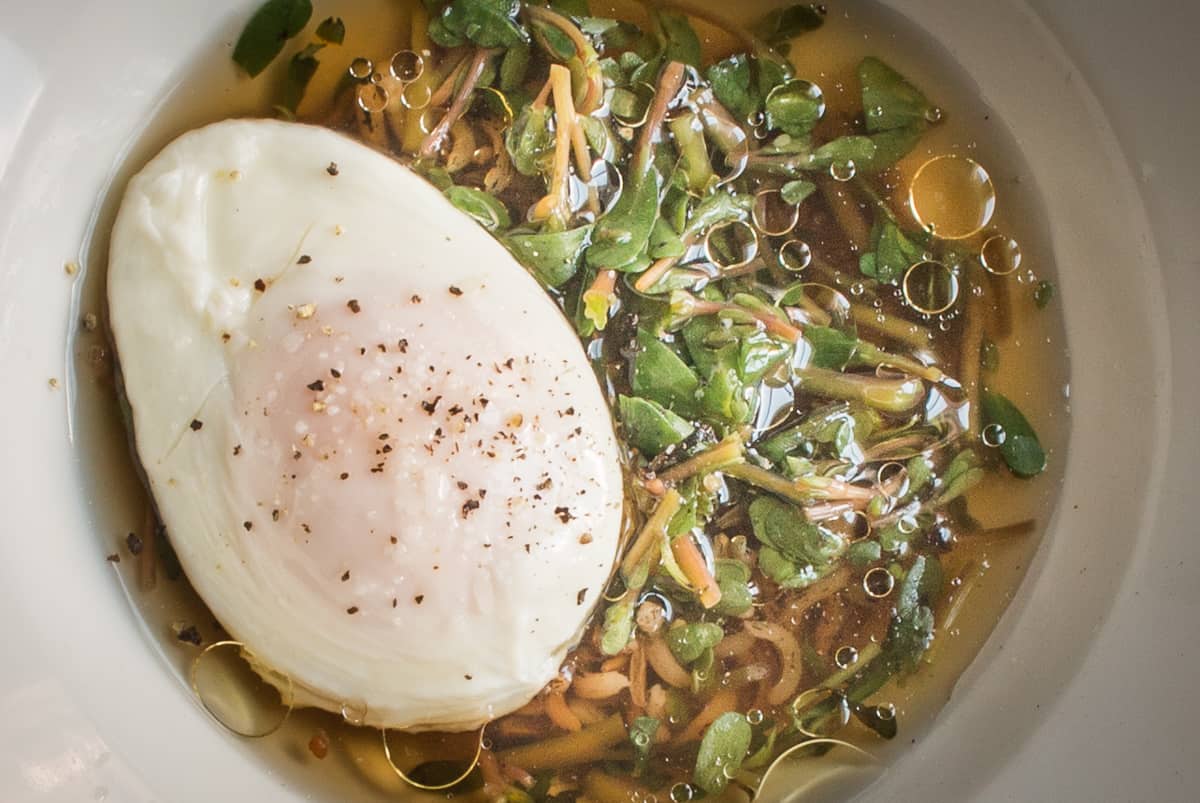
Eating raw
The greens are fantastic in a salad or as a garnish. For serving raw, I typically use only the young growing tips as pictured below. I discard the tough stems or save them to cook with other greens that need to be cooked to be tender.
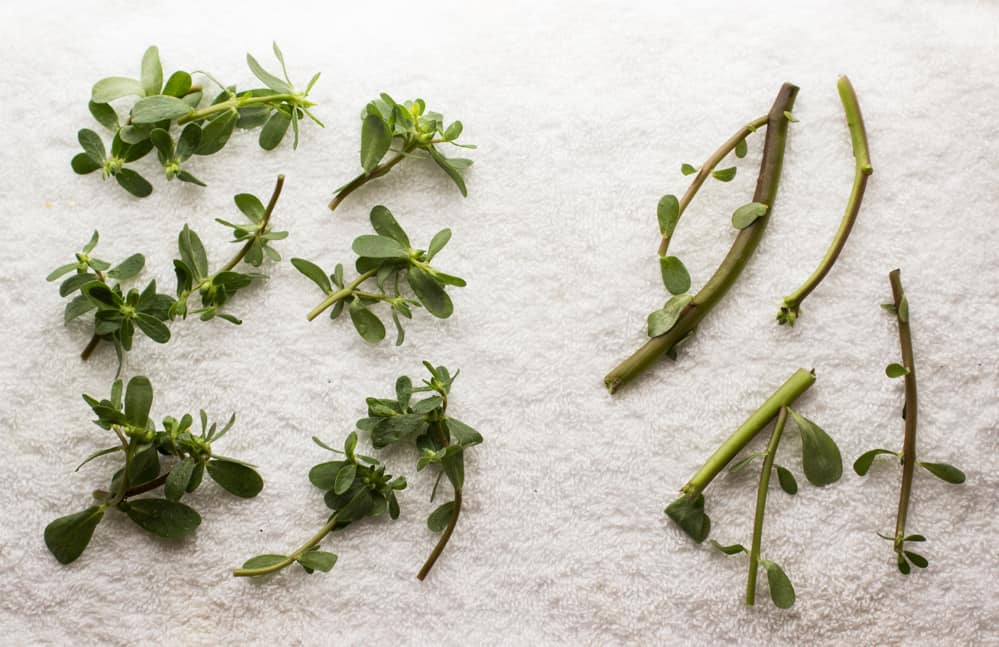
Raw purslane has a slightly tart, crisp texture and adds a beautiful contrast to salads of leafy greens. Their chunky texture also means their great in composed salads made of ingredients cut into larger shapes, like the ensalada de verdolagas below.
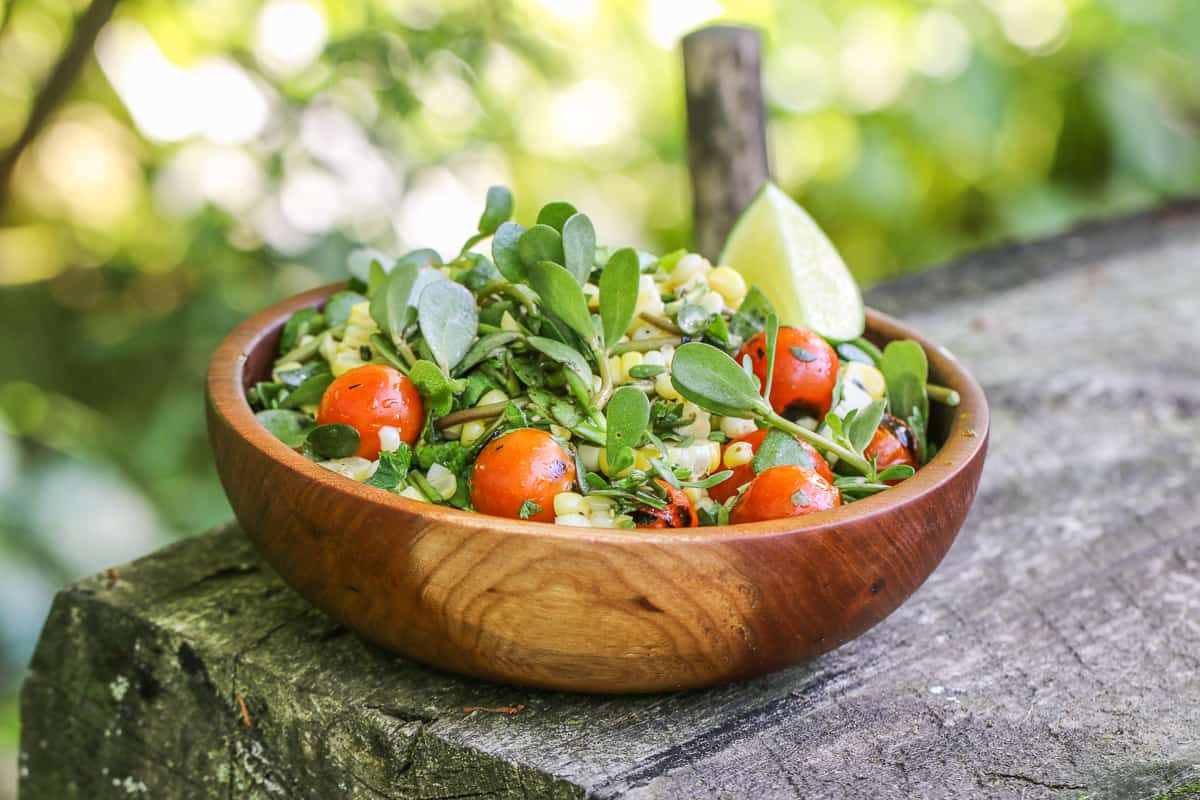
Cooked
This is a great green to cook as you would any other leafy green. For your first time, I recommend blanching it in boiling, salted water to calm the flavor. The tougher stems may seem too firm to be good if you taste them raw, but after cooking they'll get soft and tender just like the stems of other greens.
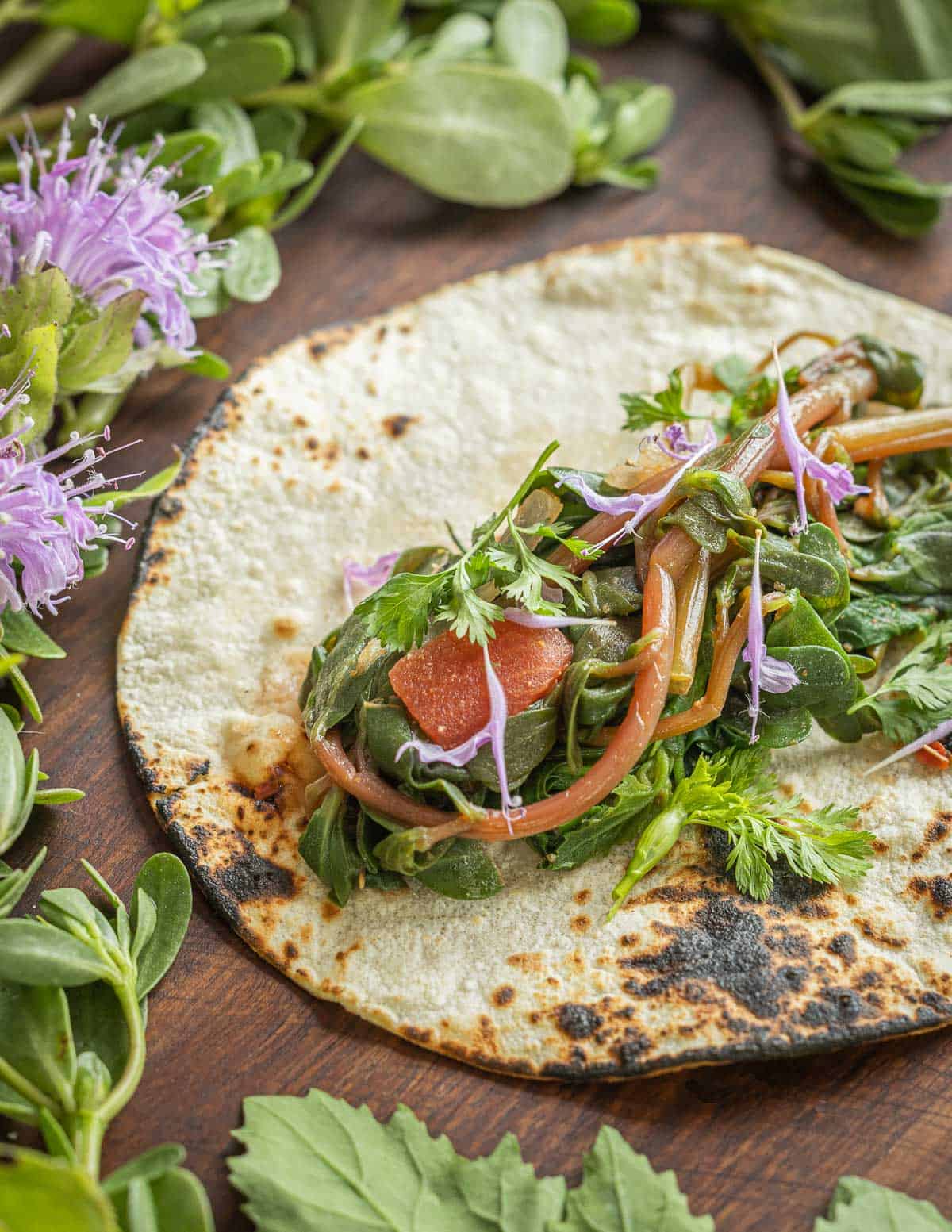
I typically bend the stems to see where they're tender, breaking them like asparagus and discarding the tougher portion which is typically the central, large stem.
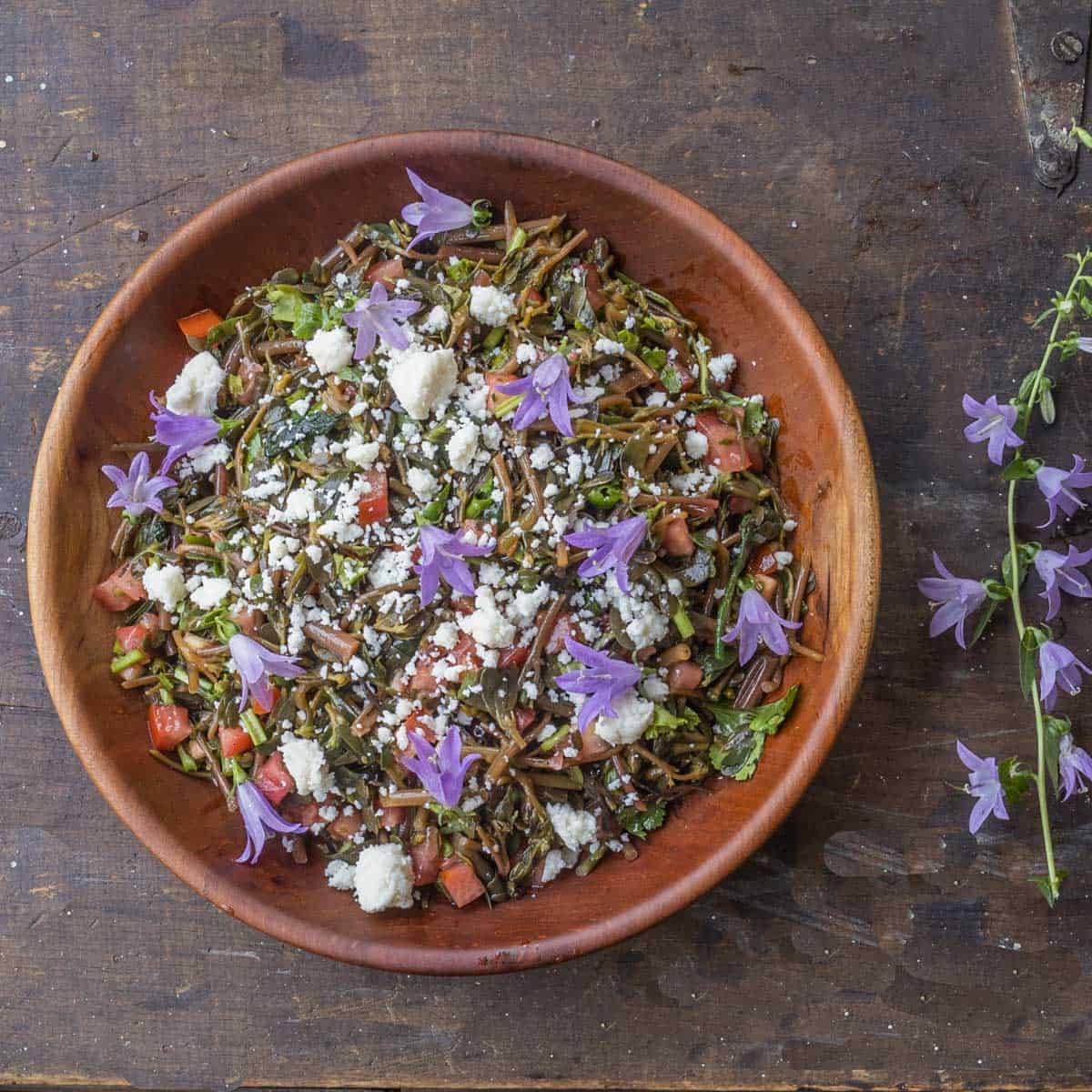
After cooking, some traditional recipes will dress the greens and stems, seasoning it as you would a salad. These are often eaten at room temperature in places where the summers are very warm. The gentle tartness of the cooled greens makes for a refreshing side dish.
Taste and texture
Unlike a lot of foraged greens I eat, purslane isn't bitter at all, but it does have a unique taste to it that will be new to some people. It has a slightly tart, sour taste, and a gentle slippery texture similar to mallow greens or okra when cooked, although it's not really noticeable unless you eat a big bowl of only purslane.
If you find the taste of it cooked in a pan too much at first, blanching it in salted water before cooking will help a lot, as will mixing it 50/50 with other greens, which is common in traditional recipes.
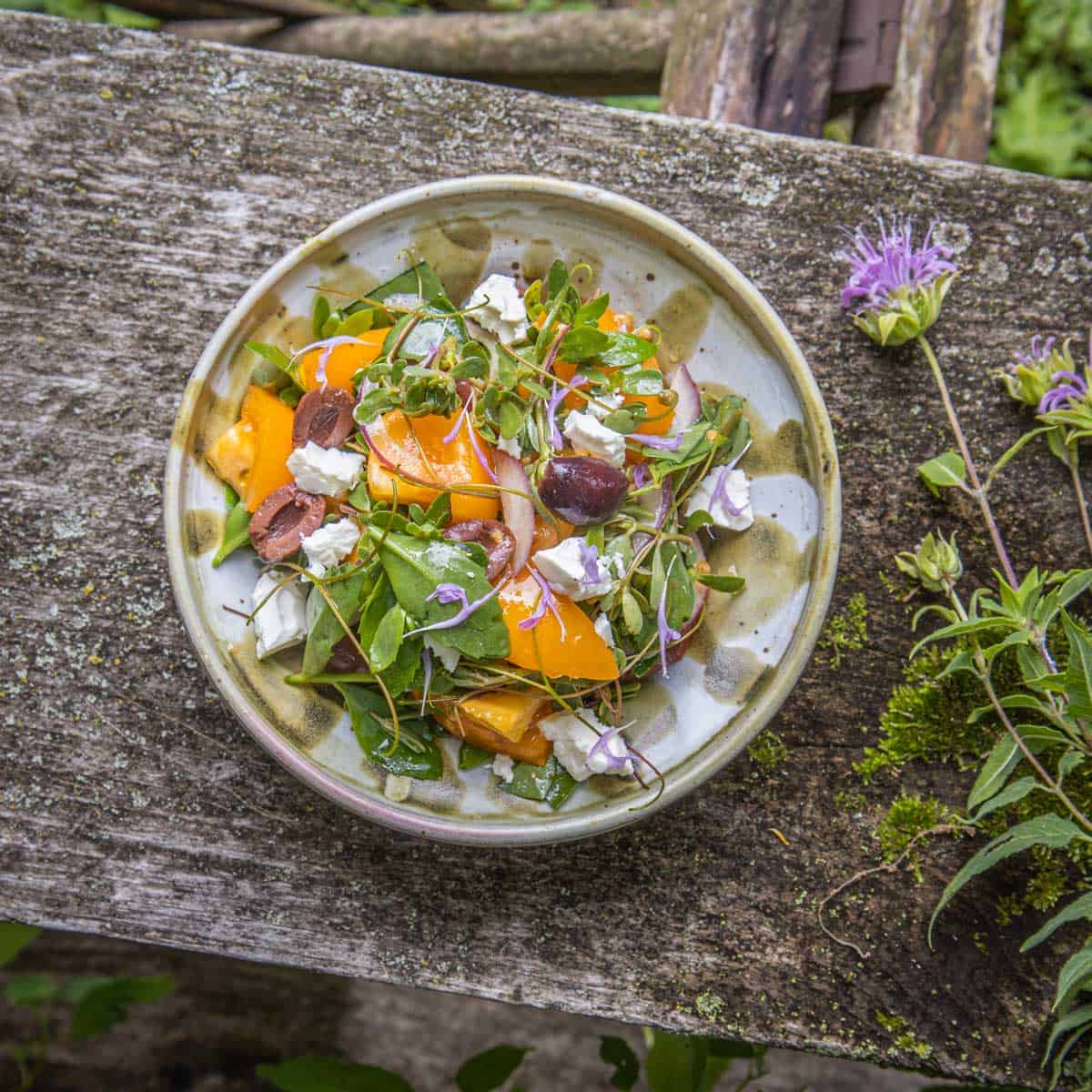
Traditional Dishes
The plant is one of the most widely eaten wild greens I know of, and there's culinary traditions and specific recipes calling for it in South America, Morocco, Turkey, Northern and Southern Italy and Greece, as well North America.
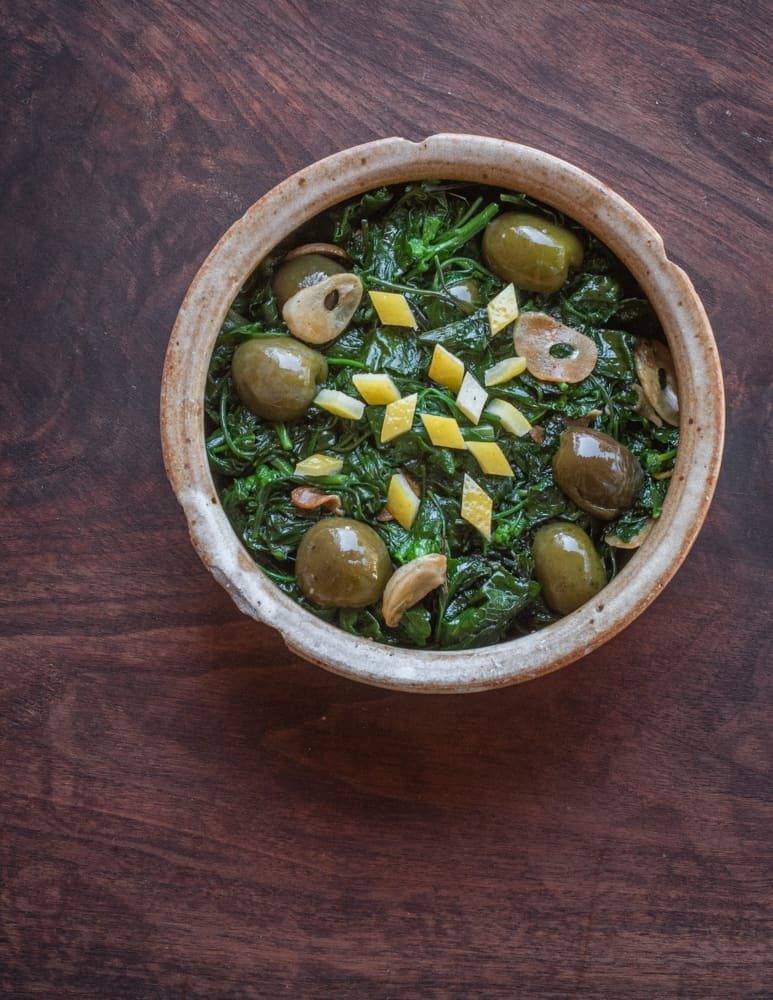
If you have any other spots to add where the plant is a traditional food, or have a recipe to share, please leave a comment.
While you can just toss the greens and tender tips in a salad, one of my favorite parts about foraging is learning about how other people cook and enjoy the same plants I harvest. Traditional recipes are traditional for a reason, making them a great place to start out experimenting with the plant in your kitchen. Here's a few you should try.
- Pirpirim Salatasi: A traditional salad of purslane mixed with garlic and yogurt.
- Quelites Guisadas: Mexican wild greens cooked with garlic, onion, tomato and jalapeno
- Bqula / Bakula: Probably the most well known and widely eaten dish of wild plants from Morocco, it's made from purslane and or mallow greens, flavored with olives, preserved lemon and spices.
Recipes
- Ensalada de Verdolagas
- Quelites Guisadas
- Wild Greek Salad
- In Mushroom Broth with a Poached Egg
- Chunky Avocado-Cucumber Salad
- Purslane Recipes
Benefits of Purslane
Just like other wild leafy greens, these are a good, nutritious addition to your repertoire. The most talked about benefit of eating them I'm aware of is their concentration of omega-3 fatty acids. While I don't talk much about health benefits on this site, the fatty acid profile of the plant is pretty well-known and accepted.

Milagros
I now been living in Spain for 30 years but was born i Uruguay and spend a lot (years ) in Brasil too..
Though I keep cooking tipic uruguain distes such as empanadas and "Pascualina" .
Something that italians brought from europe.
So .... If you have enough purslane or you can mix with other herbs , such as spinach or "acelgas" you can make this .
It's delicious and easy .
Just fry onions, red peppers, some garlic and the greens.
Dont forget 2 or 3 boiled eggs 😁 .
Salud 😊
Alan Bergo
I love this, thanks for sharing, and salud to you.
Sandra Dowkes
Thanks - I found your site when looking for ideas about cooking purslane, then your site was recommended in a foraging group on Facebook when asking for more information about them. I thought it was kind of funny to see those purple bellflowers as edible. They're a noxious weed in Canada (creeping bellflower) - I live in Alberta, where it's very cold in the winter but that doesn't kill them. But, I guess I can take the flowers off before throwing them into the incinerator. They're horrible things to have in your yard. Pretty when flowering, which is why people keep them (at first), but then they're everywhere and they really are NOT pretty when the flowering is done. Their root system is huge and they produce millions of seeds. Almost impossible to get rid of once they get started. Thought you'd be interested.
Gianni Ballabio
I understand portulaca is relatively high in oxalic acid. Does this mean you should be careful of the cooking pan you use, or that it may not be suitable for some people, such as those with kidney stones?
Alan Bergo
Hi Gianni. Many plants have oxalic acid. Most of my recipes call for it to be blanched, which removes a lot of that. Treat it as you would spinach if serving to people with kidney issues, in moderation.
Anne
Thanks for all the information on using Purslane. I’m going to gather some right now.
Alan Bergo
One of the best summer greens.
Valarie Taylor
You mentioned above above about preserving it for winter. What is the best way to do this? Blanch and freeze?
Alan Bergo
Yes I'd blanch and freeze it.